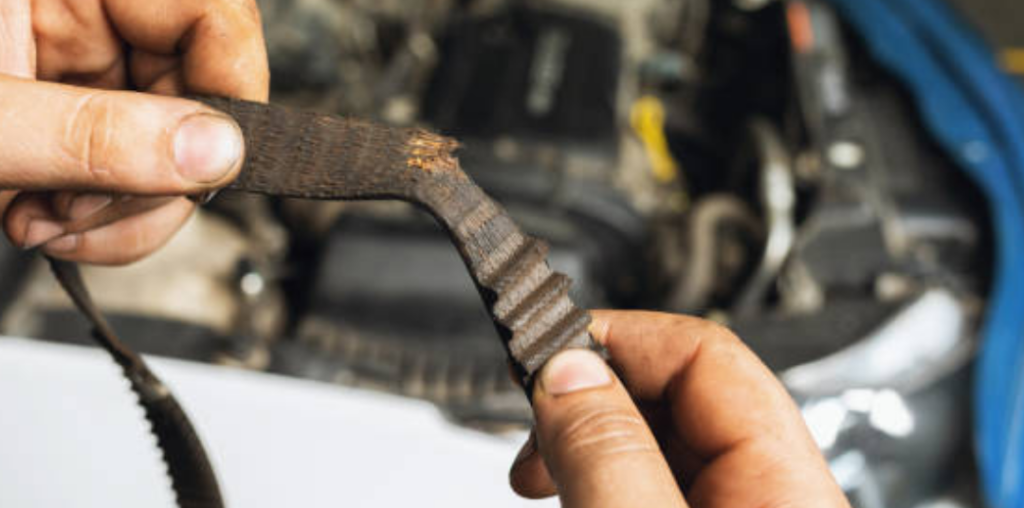Golf carts are an essential vehicle for golfers and enthusiasts, offering convenience and ease of transportation across the course. However, like any machine, they require regular maintenance to ensure optimal performance. One of the most critical yet often overlooked components in your golf cart is the belt system. Worn-out belts can lead to poor performance, costly repairs, and even complete breakdowns. Identifying the signs of wear and tear early can save you from unnecessary headaches. In this article, we’ll explore how to spot worn-out belts in your golf cart, why timely replacements are crucial, and how to keep your cart running smoothly.
Understanding the Role of Belts in Your Golf Cart
Belts in a golf cart play a crucial role in transmitting power from the engine to other components, such as the wheels and clutches. Typically, there are two main belts in most golf carts: the drive belt and the starter/generator belt.
- Drive Belt: Responsible for connecting the engine to the transmission, allowing the cart to move forward or backward.
- Starter/Generator Belt: Powers the starter and the charging system, ensuring the cart starts and maintains battery charge.
Both belts undergo significant strain due to constant use, heat, and friction. Over time, these factors can lead to wear and tear, making regular inspections a vital part of your golf cart maintenance routine.
Signs of Worn-Out Belts
Spotting worn-out belts is relatively easy if you know what to look for. Here are the most common signs that your golf cart’s belts may need attention:
Squealing or Chirping Noises
One of the most noticeable signs of a worn-out belt is a squealing or chirping sound, especially during startup or acceleration. These noises often indicate that the belt is loose, cracked, or slipping. If left unchecked, this could lead to further damage to the belt or surrounding components.
Visible Cracks, Fraying, or Glazing
Inspect the belts visually for any signs of wear, such as cracks, fraying edges, or a shiny, glazed surface. Cracks are an obvious sign of aging, while glazing typically indicates the belt has been slipping or subjected to excessive heat.
Sluggish Acceleration or Power Loss
If your golf cart struggles to accelerate or lacks its usual power, a worn-out drive belt could be the culprit. A stretched or damaged belt may not transmit power effectively, impacting your cart’s performance.
Frequent Belt Slipping
Does your golf cart’s performance fluctuate or feel jerky during operation? This could be due to belt slippage. A loose or stretched belt can slip off the pulleys, disrupting the smooth functioning of your cart.
Difficulty Starting the Cart
A damaged starter/generator belt can make it challenging to start your golf cart. If you notice repeated issues with the ignition system, it might be time to inspect this particular belt.
Why Replacing Worn-Out Belts is Crucial
Driving with worn-out belts can lead to severe mechanical problems, including:
- Damage to Pulleys and Clutches: A slipping or stretched belt can cause unnecessary wear on pulleys and clutches, leading to expensive repairs.
- Reduced Performance: A failing belt can significantly reduce your golf cart’s power and acceleration, making it less efficient.
- Safety Hazards: In worst-case scenarios, a broken belt can leave you stranded mid-course, disrupting your day.
Regular inspections and timely replacements ensure your golf cart remains reliable, efficient, and safe to use.
How to Inspect Belts in Your Golf Cart
Performing a visual and manual inspection is a straightforward way to check for worn-out belts. Follow these steps:
Locate the Belts
Refer to your golf cart’s user manual to locate the drive belt and starter/generator belt. Typically, these are found near the engine and clutch assembly.
Check for Wear and Damage
Inspect the belts for any visible signs of wear, such as cracks, fraying, or discoloration. If the belt appears shiny or smooth, it may be slipping and losing traction.
Test Belt Tension
Gently press down on the belt to test its tension. It should have a slight give but remain firm. A belt that feels too loose or too tight may require adjustment or replacement.
Listen for Unusual Sounds
Start your golf cart and listen for any squealing or chirping noises, as these often indicate a problem with the belt system.
When to Replace Worn-Out Belts
It’s recommended to replace your golf cart’s belts every 3-5 years, depending on usage and driving conditions. However, if you notice any of the above signs earlier, don’t wait for the recommended timeline. Replacing a worn-out belt promptly can save you from costly repairs and ensure your cart operates smoothly.
If you’re unsure about replacing the belts yourself, consider seeking professional help. For those located in Delaware, businesses specializing in cart belt replacement in Millsboro can provide expert assistance, ensuring the job is done right the first time.
Tips to Extend the Life of Your Golf Cart Belts
To prevent frequent replacements and keep your belts in top condition, follow these tips:
- Perform Regular Inspections: Check your belts periodically for wear and tear, especially before extended use.
- Keep Belts Clean: Dirt, oil, and debris can accelerate wear. Clean your belts and surrounding components regularly.
- Avoid Overloading: Excess weight can put additional strain on the belts and other components. Stick to your golf cart’s weight limits.
- Schedule Routine Maintenance: Regular maintenance by a professional can catch potential issues before they escalate.
Final Thoughts
Worn-out belts in your golf cart are more than just an inconvenience they can compromise the performance and safety of your vehicle. By staying vigilant and addressing signs of wear early, you can ensure a smoother ride and avoid costly repairs down the road. Remember to inspect your belts regularly, replace them as needed, and follow preventive maintenance tips to maximize their lifespan.


